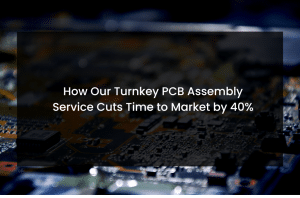Introduction
Printed Circuit Boards (PCBs) are the backbone of modern electronic devices, from smartphones and laptops to medical equipment and automotive systems. Understanding the factors that influence PCB board price, components, and the overall cost of the PCB board, is crucial for anyone involved in electronics design and manufacturing. In this blog, we will delve into the various factors that contribute to the cost of PCBs and provide insights into how you can make informed decisions to optimize your PCB procurement process.
1. PCB Complexity and Layer Count
One of the primary factors influencing PCB board price is complexity, which includes not only the cost of PCB components but also the overall cost of the PCB board. PCBs can vary in the number of layers they have, with single-layer, double-layer, and multi-layer boards being the most common. As you might expect, the more layers a PCB has, the more complex and expensive it becomes. Multi-layer PCBs are used in advanced electronics where space is limited, and signal integrity is critical.
Assess your project’s requirements carefully, considering both the cost of PCB components and the intricacies of PCB design. If you can use a simpler, single-layer, or double-layer PCB without sacrificing performance, you can significantly reduce costs.
2. PCB Size and Dimensions
The size and dimensions of a PCB directly affect its price, including the cost of PCB components. Larger PCBs require more raw materials and production time, resulting in higher costs. Additionally, larger PCBs may require more complex routing and wiring, contributing to increased manufacturing expenses.
3. Quantity and Volume
Economies of scale play a significant role in PCB pricing, impacting both the cost of PCB components and the overall cost of the PCB board. Ordering PCBs in larger quantities often results in lower per-unit costs. Manufacturers can optimize their processes when producing a larger volume of the same design, reducing labor costs and increasing efficiency.
If your project requires multiple PCBs, including the cost of PCB components, consider ordering them in bulk to take advantage of cost savings.
4. PCB Material
The choice of PCB material can significantly impact its price, affecting both the cost of PCB components and the overall cost of the PCB board. However, specialty materials like Rogers, Teflon, and aluminum-based PCBs are more expensive due to their unique properties, such as high-frequency capabilities or thermal conductivity.
Select the material that best suits your project’s specific requirements, taking into account both the cost of PCB components and PCB design intricacies. In some cases, investing in a higher-cost material may lead to better performance and durability.
5. Copper Thickness
The thickness of the copper layer on a PCB plays a vital role in its cost, affecting both the cost of PCB components and the overall cost of the PCB board. Heavier copper layers can carry more current and dissipate heat more effectively but come at a higher price.
Choose the appropriate copper thickness based on your project’s current-carrying requirements, considering both the cost of PCB components. Avoid over-specifying copper thickness to keep costs in check.
Also Read : What is Electronics Manufacturing Services (EMS)?
6. Surface Finish and Coating
The surface finish of a PCB influences its cost, including the cost of PCB components and considerations related to PCB design. Common surface finishes include HASL (Hot Air Solder Leveling), ENIG (Electroless Nickel Immersion Gold), and OSP (Organic Solderability Preservatives). Each has its advantages and costs.
7. Lead Time
Urgent projects often come with higher costs due to expedited production and shipping, impacting the cost of PCB components and the overall cost of the PCB board. A longer lead time allows for more efficient production scheduling, reducing overall costs. Plan your project timelines carefully to avoid rush orders and associated price hikes affecting the cost of PCB components.
8. Assembly and Components
If you opt for turnkey PCB assembly services, the cost of components, labor, and assembly will add to the overall PCB cost. The complexity of the assembly process, such as fine-pitch components or BGA (Ball Grid Array) packages, can also influence the price.
Evaluate whether in-house assembly or outsourcing to a contract manufacturer is more cost-effective for your project, considering both the cost of PCB components and the intricacies of PCB design. Factor in component costs and assembly complexities.
Conclusion
Understanding the various factors that affect PCB board price, including components, PCB design, and the overall cost of the PCB board, is essential for electronics designers and manufacturers. By carefully considering factors such as complexity, size, quantity, material, copper thickness, surface finish, lead time, assembly, and components, you can make informed decisions that optimize your PCB procurement process, including efficient PCB design.


